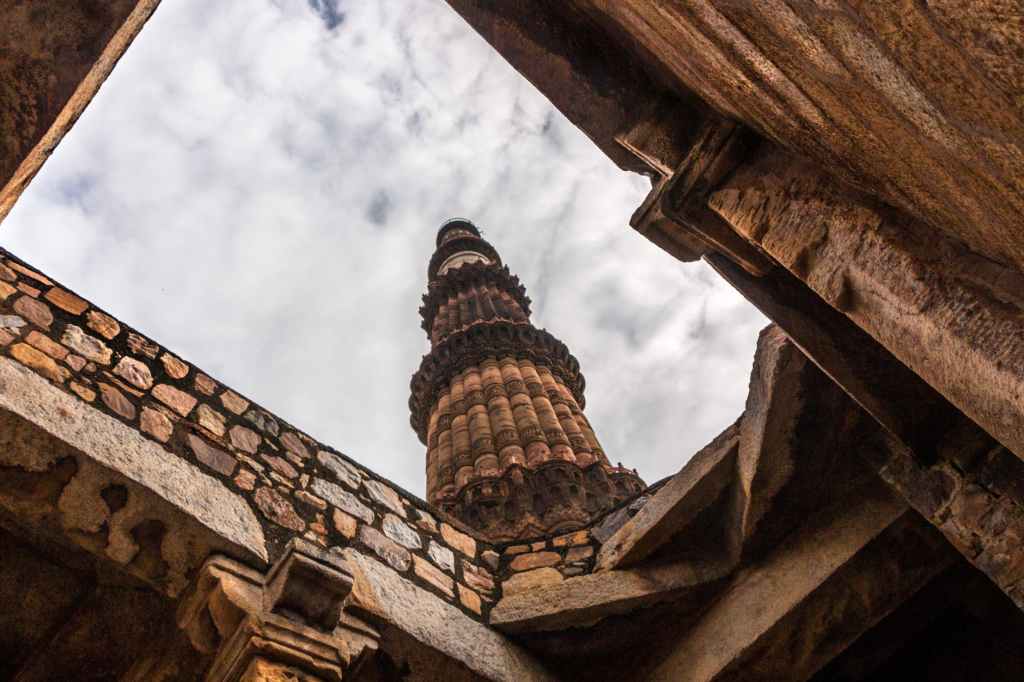
Lodhi Gardens
Delhi, with a population of more than of 25 million, is one of the mega cities of South Asia. And if you haven’t been yet, then you really should go. I’ve flown into the nation’s capital more times than I can remember, and yet it still retains a certain magnetism for me. Delhi is an ideal place to start your exploration of India, because there are so many other places within relatively easy reach. However, before you start trekking the length and breadth of India, stay a few days in the city and see what it has to offer.
Probably the best way of seeing the sights of Delhi is to either take a bus tour or hire a taxi for the day. There are plenty of agencies around the city catering for tourists that can offer you both. If you go for the taxi option, agree the fare for day before you leave and pay the agency. Alternatively, you could shell out a bit extra and book a tour online: https://www.getyourguide.co.uk/new-delhi-l231/delhi-private-full-day-sightseeing-tour-t2619/
However, here’s my recommended ‘must see’ list. I hope you find it helpful
- Rashtrapati Bhavan
The Rashtrapati Bhavan, otherwise known as the Presidential House, was designed by the renowned British architect, Sir Edwin Lutyens in the early 20th century. Built originally for the Viceroy, it now houses the President of India. Built from red and cream sandstone, it is striking in it’s appearance and makes a good starting point for your tour. Bordered by government offices on either side of Rajpath, you can simply view the Rashtrapati Bhavan through the black iron gates, and the tall Jaipur Column that stands sentinel in the foreground. Or, you can arrange to explore the presidential buildings, grounds and gardens by visiting: https://presidentofindia.gov.in/rbvisit/rbvisit.aspx
- Qutub Minar
The construction of this red sandstone tower was completed in 1193 by the Delhi’s first Muslim ruler, Qutb-ud-din Aibak. It was built to commemorate his military victories, and standing at 73 m it is definitely worth a look-see. Once upon a time you could actually go inside and climb to the top, but when a stampede killed 45 people inside the tower during a power failure in 1981, it was closed to the public. Continued fears for public safety have kept the interior closed to this day because of the sheer height of the tower.
But you can still experience it’s impressive dimensions, and marvel at this neck craning piece of ancient architecture at ground level. With some interesting ruins and delightful gardens to explore, it’s definitely worth asking your driver to apply the handbrake. Don’t forget to call into the government emporiums during your tour to pick up those all important quality souvenirs, although you will buy cheaper from street vendors.

Rashtrapati Bhavan
- Lal Qila
Lal Qila, the Red Fort, was completed in 1648 by Mughal Emperor Shah Jahan, in what is now called Old Delhi. This same emperor commissioned the Taj Mahal at Agra in memory of his beloved wife, Mumtaz. You cannot fail to be impressed by its lofty sandstone walls and battlements, which stand as mute testimony to the ruling Muslim dynasty across Northern India at that time. Accessible from Netaji Subhash Marg, the road running past the front entrance, the fort sits on the banks of the Yamuna River to the rear.
Worthy of your exploration, you can easily while away an hour or two roaming around the museums and fort grounds. Visit http://whc.unesco.org/en/list/231 for more info. Be aware that every tourist hot spot tends to attract a myriad of street sellers flogging every souvenir conceivable. If you are not interested, just say no or if you like, then barter!
- The Lotus Temple
The Bahá’í House of worship is built in the shape of a lotus flower, and was opened in 1986. Whether you’re a follower of the Bahá’í faith or not, you will find the cool interior to be a restful haven of peace and quiet from the heat, noise and bustle of Delhi. The temple is set within manicured lawns and surrounded by nine serene pools of water. Be careful in the crowds outside temple though, as pickpockets can operate in the vicinity. Keep your hands on your bags and possessions to be safe.
- Lodhi Garden
Lodhi Garden, east of Nehru Park and located in the south of Delhi, is one of the green lungs of the city. If you want to get away from it all, and that’s only a matter of time, then this is the place to go. Romantic couples can be seen walking or sitting together on the grass, whilst others amble through and just enjoy the natural beauty around them. A wide bridge spans the lake there, and paved walkways invite you to delve deeper into this green oasis. The verdant seclusion in the heart of the city, provides peace and tranquillity and a welcome relief from the urban sprawl of Delhi. It’s very historic too as the gardens contain tombs dating back to the Sayyid and Lodhi Muslim dynasties of the 15th and 16th centuries, otherwise known as the Delhi Sultanate.
- India Gate
Built to commemorate the sacrifice that Indian troops made in WW1, it looks like an Asian version of the Arc de Triomphe in Paris, but on a smaller scale. Also designed and built by Lutyens, it is situated at the end of Rajpath and looks towards the Rashtrapati Bhavan at the far end. Flanked by the Children’s Park and the August Kranti Maidan on either side, it is a natural meeting point and a great place to gather socially. Here you will find Indian friends, couples and families coming to relax, chill out, get an ice cream or maybe indulge in some tasty street food. Again beware, as it tends to attract every street hawker imaginable, but it is a great photo opportunity and not to be missed.

Near to India Gate







